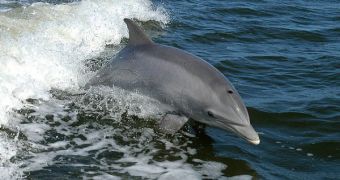Tucuxi dolphins have been thus far looked at as being rather peaceful animals that have never demonstrated until now infanticide tendencies. Behaviors of this nature are seldom observed in animals such as dolphins or whales, with only two instances of infanticide beings registered over the years in bottlenose dolphins. However, a recent study of the tucuxi variety has proven that the behavior may be more widespread than thought. The manifestation of violence was observed by Southern University of Chile expert Mariana Nery and Brazilian scientist Sheila Simao, from the Federal Rural University of Rio de Janeiro, the BBC reports.
In the case of tucuxi dolphins, violent behavior may occur between adults during the mating period, but a group of adults attacking a newborn calf has been unheard of until now. “We believe the injuries the newborn calf received from this encounter were fatal,” the experts wrote in a recent issue of the journal Marine Mammal Science. “This is the first time we've seen this type of aggression. It is difficult to say if they really attempted to kill the calf or if it was playful behavior that went too far. But they clearly looked to separate the calf from the mother,” Nery explained.
One of the reasons the experts thought of to explain this type of behavior may be that mothers who just lost their calves become receptive within a few days to males' “advances” and, therefore, more of the males get a chance to pass on their genes. However, more research is needed into this theory, as sightings of this behavior have been scarce thus far – only three, ever. The researchers also draw parallels to other species as well, saying that the practice of killing babies just to have the female becoming receptive again is not at all uncommon.
The instance described in the journal took place in 2006. The researchers, who observed the entire scene, told that the attack the males carried out was well coordinated. Six of them approached the mother and the calf, and then split – two separated the victims and started ramming the calf with their flukes, while four ensured that the mother could not return. The small dolphin was kept underwater, then thrown in the air, and then held under the water again. In the end, it had difficulties swimming, and the adults kept pounding it with their flukes.
The researchers were unable to witness the entire scene, but they wrote that they saw the mother swimming days later, whereas the calf was never again seen. Unfortunately, the experts shared, this incident added to the growing body of pieces of evidence suggesting that infanticide was a very common form of behavior among dolphins of all kinds. They concluded by saying that instances of this behavior would reveal themselves to observers located in the right place at the right time.

 14 DAY TRIAL //
14 DAY TRIAL //